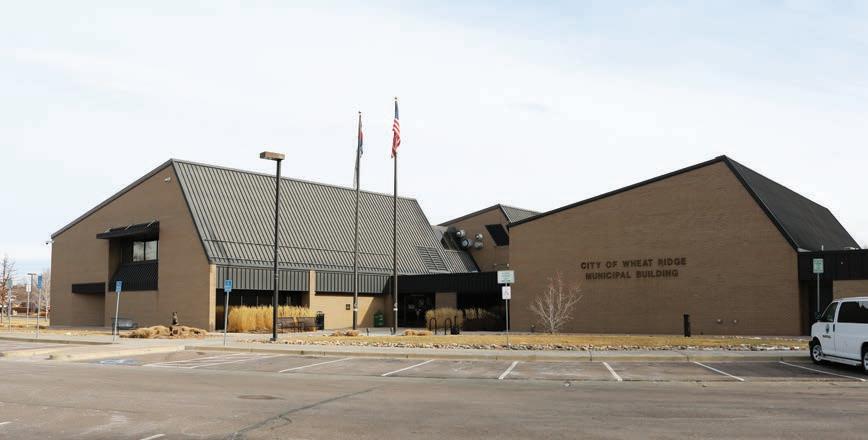
6 minute read
To our readers
nity the great place where you have decided to live.
But the fact of the matter is, the materials that it takes to get a newspaper to your front door – the newsprint, the ink, the transportation fuel – have skyrocketed in cost.
So while it’s not in our nature to make essential news less a ordable, we’ve come to the point where we must raise our prices. Beginning March 1, the price of a subscription to any of our paid publications and for all-access digital will be $85 per year.
(We will still o er a discount for readers over age 65.)
At less than $2 a week, we believe that’s still a reasonable priceto pay for news you often can’t nd anywhere else.
If you’re not interested in a subscription, consider a contribution to bit.ly/ give2CCM, or at the QR code on this page.


Local news is a public good. Raising these prices is how we’ll do even more for our communities in 2023. I am grateful for your support.
units,” not “true mixed-use outcomes,” and that creating a new zoning district as a tool for creating attached ownership housing would help resolve that. Adding an inclusionary requirement would additionally help “facilitate the delivery of some a ordable ownership opportunities” in this district.
A legal tool to require developers to set aside a percentage of units as “a ordable,” inclusionary housing is a major tool the report suggests, but this only helps households earning 80% of the Area Median Income or above — about $75,000, the report states.
“We’re not talking about something like 30% of all your units have to be a ordable to 40% AMI households, we’re talking about something we’re fairly certain can be absorbed in most developers’ portfolios,” Director of Operations and Special Projects at czb, the consultancy agency that created the report, Eric Ameigh said in a Dec. 5 study session. “ at’s how we get to, what I think we put, at 10% of units at about 80% AMI. We’re fairly condent that can be absorbed in most of these projects.” e balance, as the report explains, is being sure the percentage of units and AMI expected is not “overly onerous,” so projects being aimed at for this inclusionary housing still maintain “ nancial viability for the developer.” e report de nes 80% AMI as $75,000, with an assumption of a four-person household accord- ing to the appendix, but $75,000 is actually closer to 60% AMI for a four-person household according to that same appendix and the 2022 Income and Rent Limits for the Denver-Aurora-Lakewood metro area the report pulls the information from.



$75,000 as 80% AMI is closer to the median owner income in Wheat Ridge as well, which the report states was $90,922 in 2020.
Ignoring the AMI discrepancies, this actionable plan of revising mixed-use districts and applying inclusionary housing only focuses on helping owners with a ordability as it’s meant for attached ownership housing, of which 24% of owners are cost-burdened in Wheat Ridge compared to 51% of renters, according to the report.
A ordable, in all these contexts, is de ned as paying less than 30% of household income on housing — cost-burdened households paying more. e only actionable plan aimed at households with incomes below $75,000 — the vast majority of renters in Wheat Ridge — is a Naturally Occurring A ordable Housing Preservation Program. “Naturally occurring a ordable housing” is due to “aging and declining quality,” according to the report. e plan’s concept is to provide grant funding to landlords to upgrade units in exchange for keeping rents a ordable. e report also highlights four “opportunities” for the city — not necessarily immediately actionable steps the city could take, but avenues the city could pursue that could lead to more a ordable hous-
Other actionable plans are more technical, such as code amendments that would reduce fees or expedite review processes for projects that have an a ordability component. But, most aimed directly at income levels bene t only households earning $75,000 and up, as per the report’s aim for inclusionary zoning.

One of those opportunities includes the NOAH program, while the only other that includes renters below $75,000, and only touches on them, explores the need for building more multi-unit complexes. e report elaborates that market-rate of these types of units, due to development costs, “are likely a ordable, on average, only to households with incomes above $100,000.” It suggests inclusionary zoning as an a ordable solution to this — which, again, aims only towards households with incomes $75,000 and up, of which the vast majority of cost-burdened Wheat Ridge residents fall below that bar.
It further suggests subsidies from the city if it “desires deeper affordability aimed at lower-income households.” e development costs the report refers to are a major factor in the cost of new rentals and ownership, which it elaborates have limits to how far they can be lowered to achieve a ordability.
“ e only thing we can be sure of is that costs that contribute to housing costs are not likely to fall o so dramatically that all of a sudden we get this big sense of relief,” explained Ameigh in the same study session, looking at the costs of putting a two-bedroom unit into operation and how those costs have grown this past year. e other main “opportunity,” and high-priority actionable plan, concerns the city’s involvement with the future of the Lutheran Legacy Campus. e campus consists of Lutheran Medical Center — owned by SCL Health, a nonpro t, faith- based health system — and the organization building a new facility, planning to vacate its current 100acre campus. e report recommends the city stay involved with the redevelopment plans of the site as its involvement will be required for “rezoning, infrastructure investment” and more, as well “a once in a generation redevelopment opportunity, likely to include a substantial amount of new housing.” It would also allow the city to “make clear its expectation” that a signi cant amount of the redevelopment be a ordable housing. e “target market” for this redevelopment, according to the report, is households with incomes $75,000 and above.
One direction the city can take to assist, the report states, is increasing the allowed units per acre. Building only 24 units on a four acre site, it uses as an example, would bring the land cost per unit to $250,000, compared to 160 units on a four acre site costing only $37,500 per unit.
“As the land cost per unit falls, so too does the total cost of producing the unit,” the report explains, lowering prices.
Also included in the report are “policies,” which “connect longstanding City goals to action steps,” and “principles,” that act as “a set of high-level rules that re ect both the community’s values and aspira- tions, as well as its economic, political, and scal realities.” ese policies include supporting the development of housing for people in various stages of life, avoiding economic and income segregation, and diversifying the city’s housing stock. e report also highlights the city’s intent to support “public, private, and nonpro t organizations developing a ordable housing in the city,” and nancial incentives to projects to require affordable housing be included.
“What we’re looking at is a document that’s giving us recommendations on a direction to go, and a lot of the things we’ve been talking about tonight are the policy conversations that are going to follow,” Council member Rachel Hultin said. She continued that the work falls on the council to do more detailed policy work if they like the guidance of the document, which the council did adopt.
As for the household incomes the report focuses on, Ameigh explained during the study session that the “gap between what the households below $50,000 can pay, and what it costs to build housing, or even preserve housing, is large. So, that per unit gap is pretty substantial.”
He continued that their general thinking was that if the city had the opportunity to impact directly, like with the NOAH program, it would. Otherwise, the city would probably be supporting a ordable housing providers and housing authorities, as “those incomes really demand a level of subsidy that comes from other places.”
“ e city itself is probably not going to play deeply in that space,” he said. “Doesn’t mean it isn’t going to have a role to play in supporting projects that can leverage those subsidy sources, but it would be the place where you would be more in a supportive role, more of a responsive role…”


